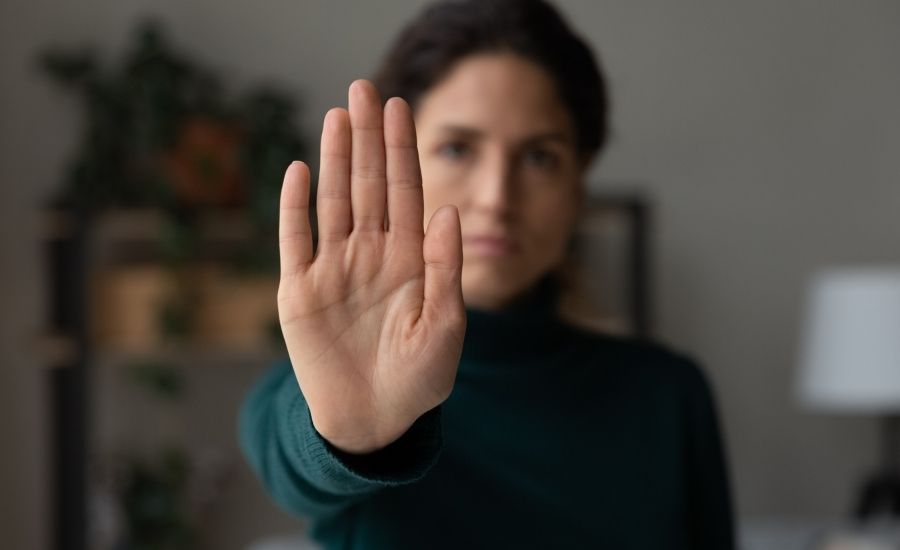
The Illusion of Safety: Are Women Safe in the Western World?
The “Ends With Us” feud between Blake Lively and Justin Baldony, apart from the celebrity battles that brought to the surface and the concerns of how easily the media can misinform us, brought as well on the spotlight a fundamental and serious issue, which, among all the Hollywood drama, was left behind: the domestic violence issue and the illusion of safety in the Western World.
The Western world often prides itself on progressive values, gender equality, and lack of discrimination. We promote women's rights, sometimes rooting for women who are not part of Western privilege and constantly praise our achievements and the progress we have made as a society to provide women with a safe place to live with dignity and fulfillment. Movements like #metoo have added to this pride, and we tend to believe that safety doesn’t concern us —it’s a problem left for the Eastern World. Yet, a sobering truth persists: women, even in these seemingly enlightened societies, face significant safety concerns. While strides have been made, the pervasive issue of violence against women remains a stark reality, and our safety is not a given —it’s leaning toward an illusion.
The Statistics Never Lie
The optimists and the ones who don’t care to pay any attention because the matter is irrelevant to them would argue that it’s almost comic to talk about safety in the Western World where women have all those rights, and we should see what happens on the other side, aka the East. However, the statistics don’t follow this narrative and are more than encouraging.
Sexual Assault: A surprising number of women experience sexual assault in their lifetimes. While reporting rates vary, it's clear that many incidents go unreported due to fear, shame, or a lack of faith in the justice system and law enforcement. Victims may worry about being blamed, disbelieved, or re-traumatized by the legal process, and they just live with it. These barriers to reporting often leave perpetrators unaccountable and perpetuate a cycle of violence.
1 in 5 women in the U.S. has been the victim of rape.
Most sexual assaults are committed by someone the victim knows.
About 1 in 6 women in the U.S. has been stalked at some point in her life.
The same EU study found that 11% of women in the EU had experienced sexual violence in the past 12 months.
Domestic Violence: Domestic violence, a pervasive issue that disproportionately affects women, encompasses a range of abusive behaviors, including physical, emotional, and psychological violence. This insidious cycle of abuse can leave victims feeling trapped, isolated, and powerless. Physical abuse may involve hitting, slapping, kicking, or other forms of physical harm. Emotional abuse, on the other hand, involves tactics such as gaslighting, manipulation, and constant criticism aimed at undermining the victim's self-esteem and sense of reality. Psychological abuse may include intimidation, threats, and controlling behaviors, designed to instill fear and dependence. The cycle of abuse often escalates over time, with periods of tension, violence, and a brief period of calm or honeymoon phase, followed by a return to tension and violence. This pattern can make it difficult for victims to recognize the abusive nature of the relationship and seek help, and they may spend all their lives having to live in such relationships —if they are lucky to live.
1 in 4 women experience severe physical violence, sexual violence, or stalking by an intimate partner in their lifetime.
On average, nearly 20 people per minute are physically abused by an intimate partner in the U.S.
A study by the European Union Agency for Fundamental Rights found that 22% of women in Western Europe experienced intimate partner violence in 2020.
Workplace Harassment: Workplace harassment, particularly sexual harassment and discrimination, continues to be a significant challenge for women in many professional settings. These experiences can range from subtle microaggressions, such as sexist jokes or comments, to overt acts of harassment, including sexual assault and coercion.
The impact of workplace harassment affects women's mental health, job satisfaction, and career advancement. Victims may experience anxiety, depression, and post-traumatic stress disorder. Moreover, harassment can create a hostile work environment, undermining productivity and morale and kicking women out of the job market, jeopardizing their careers and financial independence.
Street Harassment: Street harassment, a pervasive form of gender-based violence, involves unwanted and intrusive behaviors directed at individuals in public spaces. For women, this can range from verbal harassment, such as catcalling and lewd comments, to physical harassment, including unwanted touching and groping.
The impact of street harassment is significant, often leading to feelings of fear, anxiety, and diminished self-esteem. It can restrict women's freedom of movement, forcing them to alter their daily routines, avoid specific public spaces, and restrain themselves from walking alone in case someone attacks them. Street harassment creates a climate of intimidation, making women feel unsafe and vulnerable in their communities.
The Root of the Problem

The persistence of violence against women is a deeply rooted issue, influenced by a complex interplay of societal factors. Gender inequality, a pervasive force in many cultures, creates power imbalances that can lead to abuse and exploitation. Patriarchal norms, which often prioritize male dominance and control, can perpetuate harmful stereotypes and reinforce gender-based discrimination. Societal attitudes, shaped by cultural and historical factors, can either condone or challenge violence against women. Misogynistic beliefs, which often view women as inferior or objects of desire, can contribute to a climate of tolerance for abuse. Additionally, the normalization of violence in media and popular culture can desensitize individuals to its harmful effects and perpetuate harmful stereotypes. Women are scrutinized heavier than men, and no matter how hard they try to conform to the stereotypes, they will always be victims and vulnerable targets.
Breaking the Silence
To effectively address the pervasive issue of violence against women, it is imperative to break the silence surrounding this problem. Encouraging open and honest conversations about violence, abuse, and harassment can help to reduce stigma and empower survivors to seek help. By promoting empathy and understanding, we can foster a culture of compassion and support for those who have experienced trauma.
Furthermore, it is essential to challenge harmful gender stereotypes that perpetuate gender inequality and contribute to violence. By promoting gender equality and challenging patriarchal norms, we can create a society where all individuals are valued and respected.
Strengthening legal frameworks, improving law enforcement response, and providing comprehensive support services for survivors are crucial steps. Investing in victim support services, such as hotlines, shelters, and counseling, can help survivors heal and rebuild their lives. Additionally, it is essential to hold perpetrators accountable by ensuring that laws are effectively enforced and that justice is served.
To write this, we consulted:
https://wbl.worldbank.org/en/safety
(https://iwpr.org/harassment-in-the-workplace-why-the-us-and-the-eu-must-act/#:~:text=In the European Union, 18,(68 percent) then men)(https://iwpr.org/harassment-in-the-workplace-why-the-us-and-the-eu-must-act/#:~:text=In the European Union, 18,(68 percent) then men) .






